Jagdpanzer IV Tank Destroyer
This German WW2 Jagdpanzer IV Tank Destroyer can be found at the Deutsches Panzermuseum in the small military town of Munster, Germany.
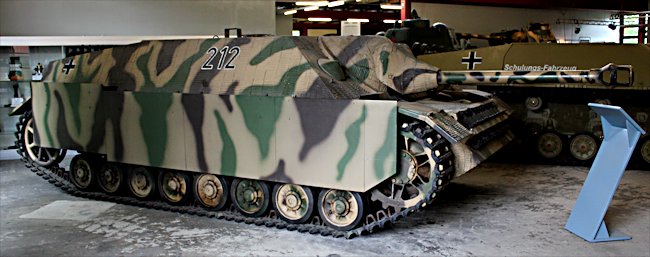
German WW2 Jgdpz IV Tank Destroyer
During the Ardennes is offensive, Battle of the Bulge, German Panzer IV and Panther tanks had problems negotiating the small forest tracks and cobbled narrow village streets. Even small tank destroyers like the Hetzer and StuG III had difficulties. A Jagdpanzer IV weighed only a third of the total weight of the King Tiger but one managed to collapse a bridge during the offensive. It wasn't just the huge monster King Tiger tanks that found the Belgium Ardennes problematic in advancing quickly as ordered. All tanks did.
The success of assault guns like the StuG III as tank destroyers led the German High Command to reassess the continued production of open topped tank destroyers like the Marder. The ordered the next phase in the development of the Jagdpanzer assault gun tank destroyer.
The Jagdpanzer IV entered service in January 1944. It was fitted with the same long barrel high velocity 75 mm gun that was fitted to the new Panther tank just-in-time for the Allied invasion of Normandy. The chassis was based on the Panzer IV medium tank. It had a lower profile than the Stug III making it less easy to be seen by the enemy. Its height was 6'1" (1.85m) compared with the taller StuG III tank destroyer that stood a foot taller at 7'1" (2.16m).
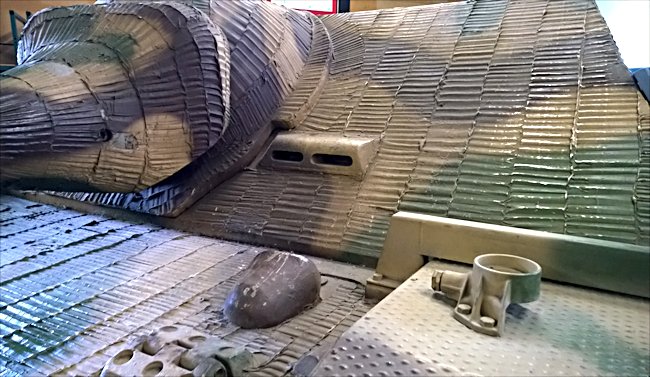
Zimmerite anti-magnetic mine paste was applied to the Jagdpanzer IV external surfaces.
As the weight of the gun made the chassis, nose heavy, the front two rubber wheels were replaced with all metal wheels. It had 80 mm of armour at the front but because it was heavily sloped this in effect meant that an Allied shell would have to travel through 120mm of armour to reach the inside of the tank. Very few Allied tank guns could do this.
So long as the Jagdpanzer IV crews kept the front of their vehicle pointing towards the enemy, they were relatively safe from direct fire. It was an ideal defensive weapon which for the latter part of the war was useful because the German army was defending territory from the Russians and Allied advances.
The Jagdpanzer IV crews were expert in camouflaging their vehicles to make them difficult to be spotted from the ground as well as from the air. They found a location where they expected enemy armour to appear. They would try to engage the enemy at long range and maximise the advantage of their long barrel high velocity 75 mm gun. They tried to knock out one or two enemy tanks before they could be fired upon.
The commander of the Jagdpanzer IV would then instruct his driver to reposition to a previously prepared defensive location and wait for the enemy to appear again. If possible Jagdpanzer IV tank destroyers would fight in groups of six or three. They were a very formidable weapon.
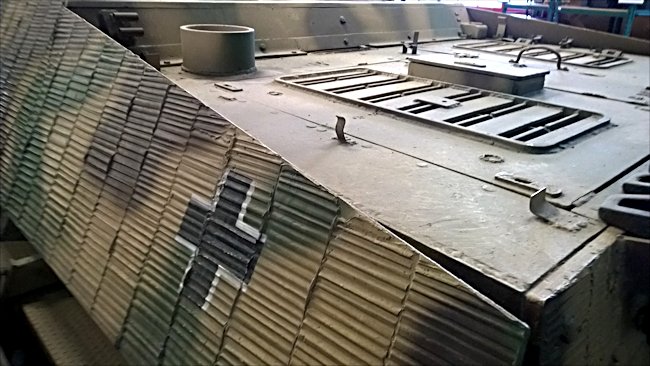
The side of the jagdpanzer IV was coated with Zimmerit antimagnetic mine paste. You can also see the engine cover hatches at the rear of the Jagdpanzer
Zimmerit antimagnetic mine paste
About 2000 Jagdpanzer IV tank destroyers were produced. They were deployed on both the Eastern and Western fronts. This tank in the photograph, located at the German tank museum, has been coated in Zimmerit antimagnetic mine paste.
The German Wehrmacht feared the increased use of magnetic limpet mines during the battle with Russian infantry. Enemy soldiers would wait in a hole, behind a building or stonewall, for a Panzer to go past. They would then rush the vehicle and attach one or two of these mines to its side or top. The tank crews had no defence.
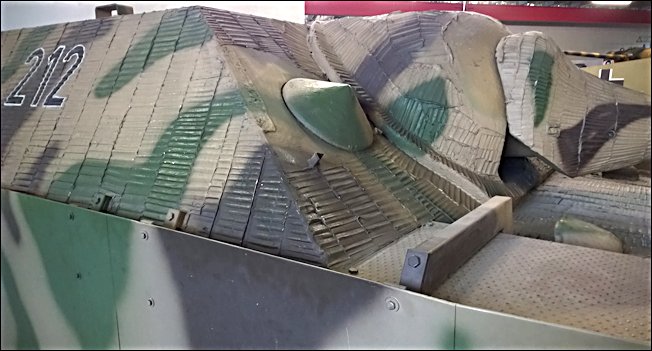
The armoured cone covers the hull machine gun on the front of the Jagdpanzer IV. Side view of the armoured pig nose 75mm pig-nose protective gun mantel
In early 1943, the German army weapons department ordered the development of an effective countermeasure. A company called Chemische Werke Zimmer AG came up with the answer. It was a cement like armour coating that was applied by hand using a ridged scraper tool. The company's name was applied to the product. It contained several chemicals, putty and sawdust. The ridged pattern helped to keep the distance between the armour and the limpet mine as big as possible.
From September 1943 Zimmerit was applied to all important armoured vehicles. A Jagdpanzer IV would require around 90 kg of Zimmerit whilst the Tiger tank would need 200 kg. To apply the coating normally took six days of extra work. Because of this delay in getting new tanks to the front line, the coating stopped being applied to new vehicles after September 1944. The widespread use of magnetic limpet mines by the enemy did not materialise.
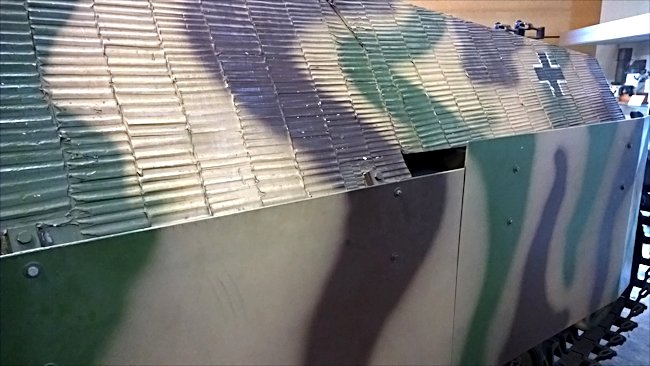
Shaped-charged shells were effective against tank armour. As a defence side skirt Seitenschüren armour was attached to the side of the Jagdpanzer IV.
Seitenschüren armoured side skirts
Another technical weapons development by the enemy that caused problems for German armoured vehicles was the invention of shaped charges. The explosion causes enormous pressure on the cone of metal, normally copper, in the warhead when it hits the side of a tank. The metal is liquefied and forms a ray of extremely hot metal that cuts through the armour, kills the crew and often detonates the ammunition stored inside the vehicle. These new shape charged shells were being fired by Allied and Russian tank destroyers. They could also be fired from handheld anti-tank weapons like the bazooka.
In March 1943, the Germans equipped most their tanks and Jagdpanzers with 5 mm thick metal plates that hung on the outside of the vehicle on rails. They were called Seitenschurzen or side skirts. The striking projectile would hit this thin plate metal and ignite. The liquid core would penetrate the skirt armour but not have enough energy to penetrate the vehicles main armour because of the air gap between them. Most Jagdpanzer IV were fitted with Seitenschüren.
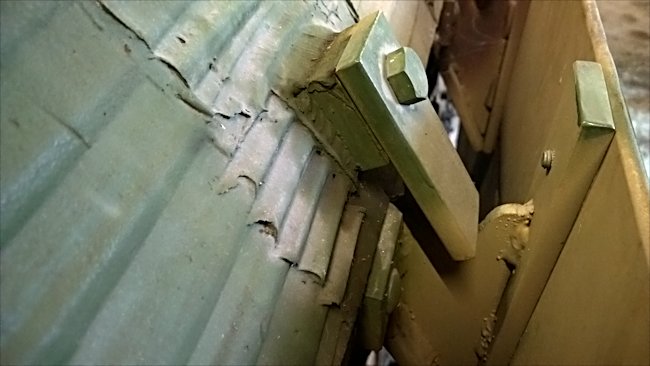
The side skirt Seitenschüren armour on the Jagdpanzer IV was easy to remove and attach if it had been damaged and needed replacing.

Spare track was bolted above the exhaust on the Jagdpanzer IV for added protection
WW2 tank books

